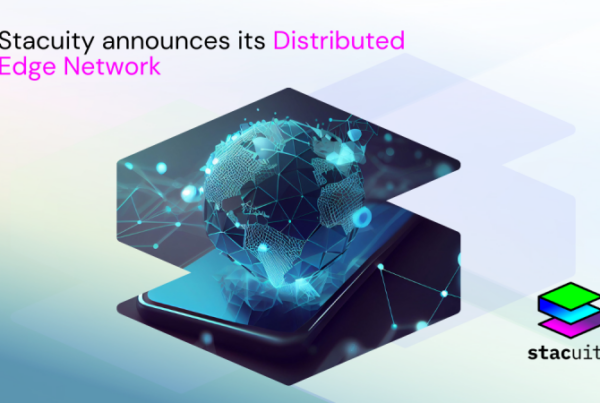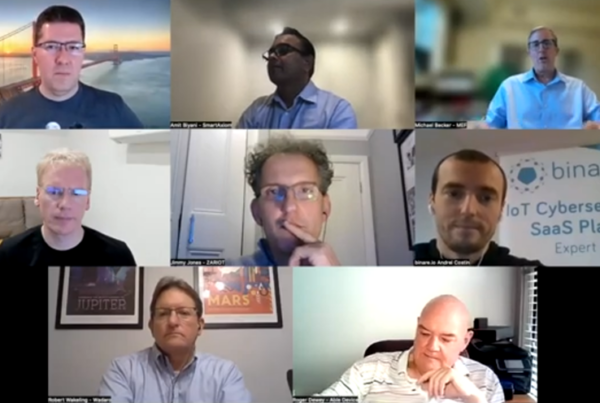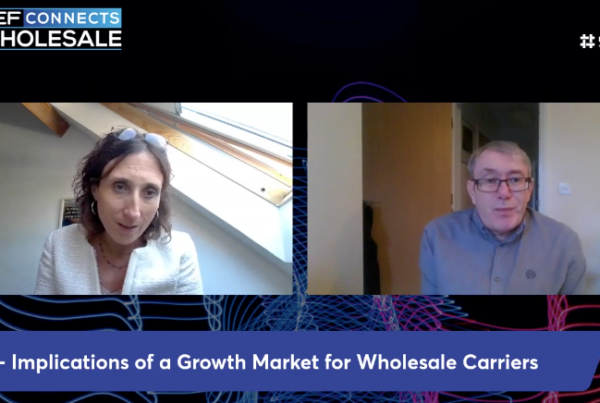Google has announced plans to turn off its IoT solution within a year – the surprise news creating plenty of discussion in the industry. Here Nassia Skoulikariti, IoT Program Director at MEF, sheds lights on what the move really means for the IoT space.
As we all know, Google is a giant in the internet world. They have a lot of products and services that we use daily. Recently, they announced that they are retiring their cloud IoT Core service. Many businesses using this service will now have to find another way to connect their devices to the internet.

When I heard the news, I wanted to say, “I told you so.” Reaching out to IoT developers is not an easy task and the ecosystem is very competitive. The results and figures shared by the analyst community is contested by many.”. It was a complex task that requires a long term view. Google was probably not the right fit – despite clearly being a pillar in the Internet computing today. Potential sales were marred by the concerns by developers and business that this was going to be a short-lived product. They were probably right: only five years after its inception, Google abandons yet another brainchild. Google has a long history of creating and retiring products at the drop of a hat; a flexibility appreciated on the Internet, but less so in the Internet of Things.
Googles Cloud IoT Core
Cloud IoT Core is a cloud service that Google created to allow businesses to connect their devices to the internet. It enables customers to connect, manage, and ingest data from millions of globally dispersed devices quickly and securely.
The decision to discontinue the service is remarkable, considering the service had only been available for five years. Despite this, the decision to discontinue it was made without any public announcement or fanfare. Google hasn’t provided any details regarding its reasons for shutting down and encouraging customers to migrate services to one of its many partners.“
A bit of history
The company released the first public beta of its IoT Core service in 2017 as a competing solution to the IoT offerings from other cloud vendors – Microsoft with Azure IoT Hub and AWS with AWS IoT Core. In early 2018, the service became generally available.
However, last week, Google emailed its customers with the message, “We’re writing to let you know that Google Cloud’s IoT Core Service will be discontinued on August 16, 2023, at which point your access to the IoT Core Device Manager APIs will no longer be available. As of that date, devices will be unable to connect to the Google Cloud IoT Core MQTT and HTTP bridges, and existing connections will be shut down,”.
Google Cloud IoT Core has seen steady growth since its debut in beta in March 2017. The Google team has invested significant engineering resources to improve the product, and they have been striving to improve their sales initiatives.
The decision to discontinue the service is remarkable, considering the service had only been available for five years. Despite this, the decision to discontinue it was made without any public announcement or fanfare. Google hasn’t provided any details regarding its reasons for shutting down and encouraging customers to migrate services to one of its many partners.
But the problems were visible for many, the platform was not offering a competitive services by its latest yeat. Google ‘s offer was the weaker among the three major cloud computing companies (the others being Microsoft’s Azure and AWS’s IoT Core). “Google has failed to adhere to current security standards, modernize their platform, and has added few to no new features since inception,” according to one analyst we reached out for comments..
This retirement disappoints many hoping that Google would take advantage of the growing IoT market.
What does this mean for your business?
As of August 15, 2023, Google Cloud Iot Core service will no longer be available. This means that users will not be able to access the Device Manager API’s. The announcement has come as a surprise to some, but it also presents an opportunity for those who are looking to adopt cloud-based IoT solutions.
This is a great opportunity to consider all your options and decide if you will migrate to another cloud vendor or a niche supplier or build your own solution.
Microsoft’s Azure IoT platform or AWS IoT are good alternative to Google’s Cloud IoT Core. Already a Google partner, ClearBlade announced a full-service replacement for the IoT Core with their service, including a migration path from Google IoT Core to ClearBlade.
Whether you’re starting from scratch or planning to migrate your existing IoT solution to the Microsoft Azure, Amazon Web Service (AWS) or Clearblade platforms, there are many options for your business to choose from.
Each platform has its own strengths and weaknesses, so it’s important to do your research before making a decision. Overall, however, the cloud-based IoT Core service from Google was a good option for smaller businesses that didn’t need the more advanced features of Azure or AWS.
It’s worth noting that all three of the leading cloud providers – Amazon, Microsoft, and Google – have been slow to innovate in IoT services. This has allowed the best-of-breed and specialized vendors to catch up.
Many IoT vendors use the three most popular cloud infrastructures to run their software, giving them access to these workloads without investing in their own platforms.
Multiple analysts have speculated that the company’s recent cloud losses may be due to its efforts to catch up with Amazon and Microsoft. However, the company’s latest earnings report shows revenue growth of more than $6 billion from last year, indicating that the investment is paying off in some areas.
There is always an inherent dependency and risk when we build services on top of someone else’s infrastructure and network. At the same time, it’s clearly illogical to keep reinventing the wheel. It comes down to your company’s IoT product strategy, long-term goals and the type of service you are offering or planning to offer.
There is no one-size-fits-all answer regarding IoT business planning and strategy, as the best approach for your company will depend on the specifics of your situation. However, taking time to evaluate all your options and having a concrete plan will help reduce the risk associated with working with small or big brands.





